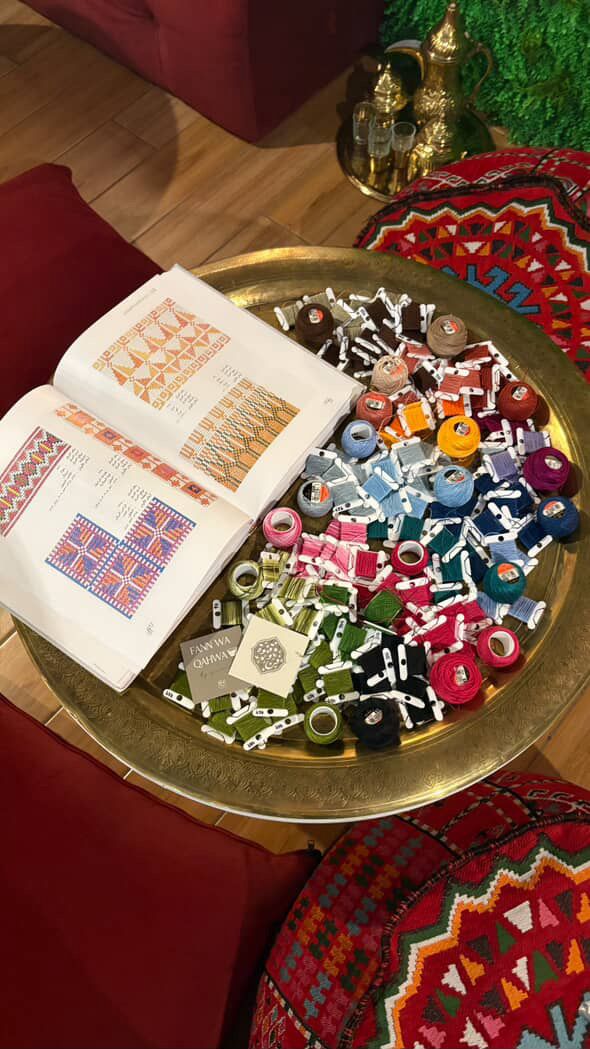Guest Post: A Story + Recipe to Celebrate Olive Oil

When I first moved from home to New York City at 18-years-old, I was in a dorm, and didn’t have a kitchen to prepare my own food. I very quickly realized something was missing. Being a child from a mixed background, my sense of home and belonging was deeply rooted in the foods I ate, and the creative ways my Palestinian Mama would adapt her family’s dishes to what we could find here in the United States.
I grew up eating Palestinian food every day of the week. It wasn’t just the tastes and the smells that brought me comfort - it was the deep ancestral wisdom that lived through these dishes. The luxurious yet accessible comfort of my people’s cuisine not only made me feel at home, but made my American friends feel at home too - almost as if it was a memory of theirs, too.
As soon as I had a kitchen of my own, I became obsessed with mastering these recipes and making them my own, just like my Mama did.
This was one of the first recipes that I learned how to make after moving into my own place, and it hits every note - it is comforting and savory, deeply nutritious, and a wild crowd pleaser. It is one of my signature recipes and one that has brought people together over and over again.

Fattet Batenjan (Eggplant Fatteh)
Get ready for one of your new favorite dishes - Eggplant Fatteh is a star on any table, and makes the perfect leftover meal. Eggplants are roasted in olive oil and topped with a garlicky yogurt and crispy pita for a dish that you won’t get enough of.
This recipe serves ~6 people, depending on how much you are willing to share.
Ingredients (amounts can be adjusted for your taste and table):
- 1 large eggplant or a few babies
- Extra Virgin olive oil (real extra virgin please!)
- Salt (no table salt, use kosher or sea salt)
- 2 cups plain yogurt (roughly, depending on the width of your dish)
- 3-4 cloves of garlic depending on your taste
- 3-4 small pita breads (or pita chips if we’re lazy)
- Minced parsley to garnish
- Toasted pine nuts to garnish (or slivered almonds)

Method:
- Preheat the oven to 400º F.
- Wash and cut the eggplant into small cubes. The smaller the pieces, the more quickly it will cook, and the more it will come together with a buttery texture.
- Place the eggplant pieces in a pan on parchment paper and coat lightly with olive oil and a few healthy pinches of salt. Salt is the key ingredient here- it will help to extract the water from the eggplant and turn it into a soft, buttery texture, avoiding that “rubbery” feeling that turns most people off from it.
- Toss the eggplant, salt and olive oil together and throw it in the oven. These can take anywhere from 30-45 minutes (or more, depending on your oven) to get that perfect texture. Check on them every 10 minutes & toss them around so they cook evenly.
- Prepare the yogurt topping: Add about 2 cups of yogurt to a bowl (enough so that you will be able to cover the eggplant in the baking dish you plan to serve it in. You may need a bit more.)
- Using a pestle and mortar (or a garlic crusher, or finely dice), mush together 2-4 cloves of garlic with a pinch of salt and olive oil. (The salt helps extract the liquid from the garlic and turn it into a pasty texture.)
- Mix the garlic into the yogurt and set aside.
- Prepare the pita chips. Slice or rip a few pieces of pita bread into triangles. Be sure to separate the top and bottom pieces of the pita to be able to make more. If you have bought pita chips or already made them, you can skip this step.
- Arrange the chips on a baking tray with parchment paper. Drizzle olive oil and sprinkle with salt. (If you were making pita chips for anything else, you could also toss them with spices or zaatar at this point.) Toss them and put in the oven. The oven is already hot at this point, so they should not take more than 10-15 minutes. Keep a close eye on these, as they will burn easily.
- Once the eggplant is roasted to your liking and the pita chips are done, you are ready to layer the fatteh. I like to use an oven safe casserole or baking dish that is pretty to serve in. start by piling all the eggplant in and spread it evenly on the bottom.
- Top with garlic yogurt and spread evenly across the top.
- Stick your now crispy pita chips into the yogurt in a pattern that feels cute.
- Pop your pine nuts dry on a pan in the oven to toast for just a minute. (Careful! These will take very little time to toast up, and can burn easily!) You can also skip this step and add them without toasting, but it does add a complexity to the garnish. These can also be prepared in advance or done earlier in the recipe.
- Pop your fatteh back in the oven for 5-or-so minutes just to bring everything together.
- Top with minced parsley and nuts. Serve warm...or not! This is one of the greatest leftovers. Some people even prefer it cold from the fridge the next day.
Watch the recipe video here!
- By Nadia Gilbert.
Guest contributor, Nadia, is a Palestinian-American visual artist, Reiki practitioner, chef, director, and host of Sahtein. Their multifaceted work aims to activate humanity through art, healing spaces and redefining our idea of nourishment. They are constantly on the move but always returning to Brooklyn. You can find Nadia's work and get in touch through their websites: www.nadiairshaid.com and www.nadiairshaid.art
All photographs by Nadia Gilbert for Sitti Social Enterprise.





Leave a comment